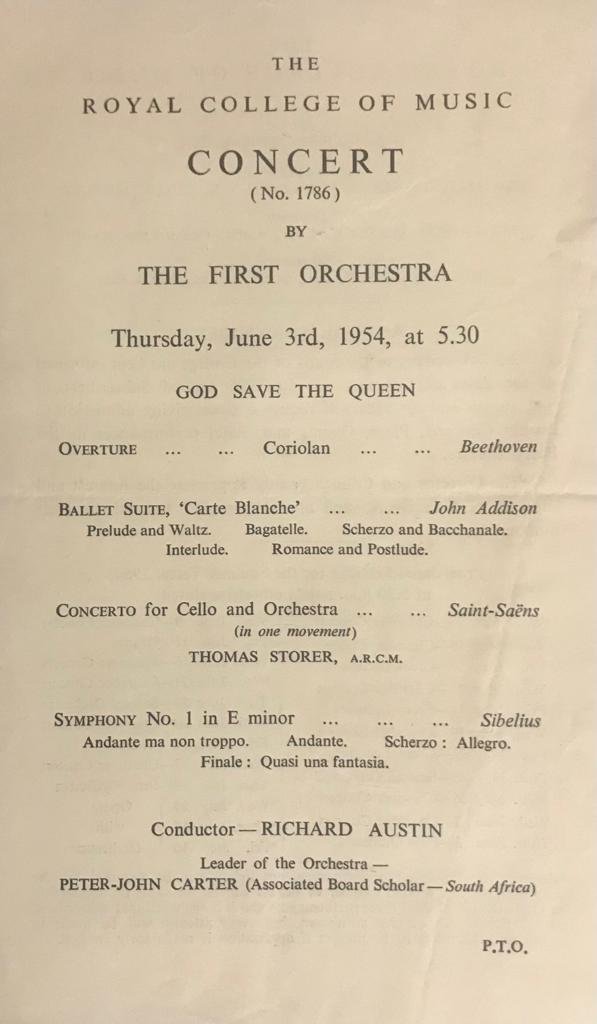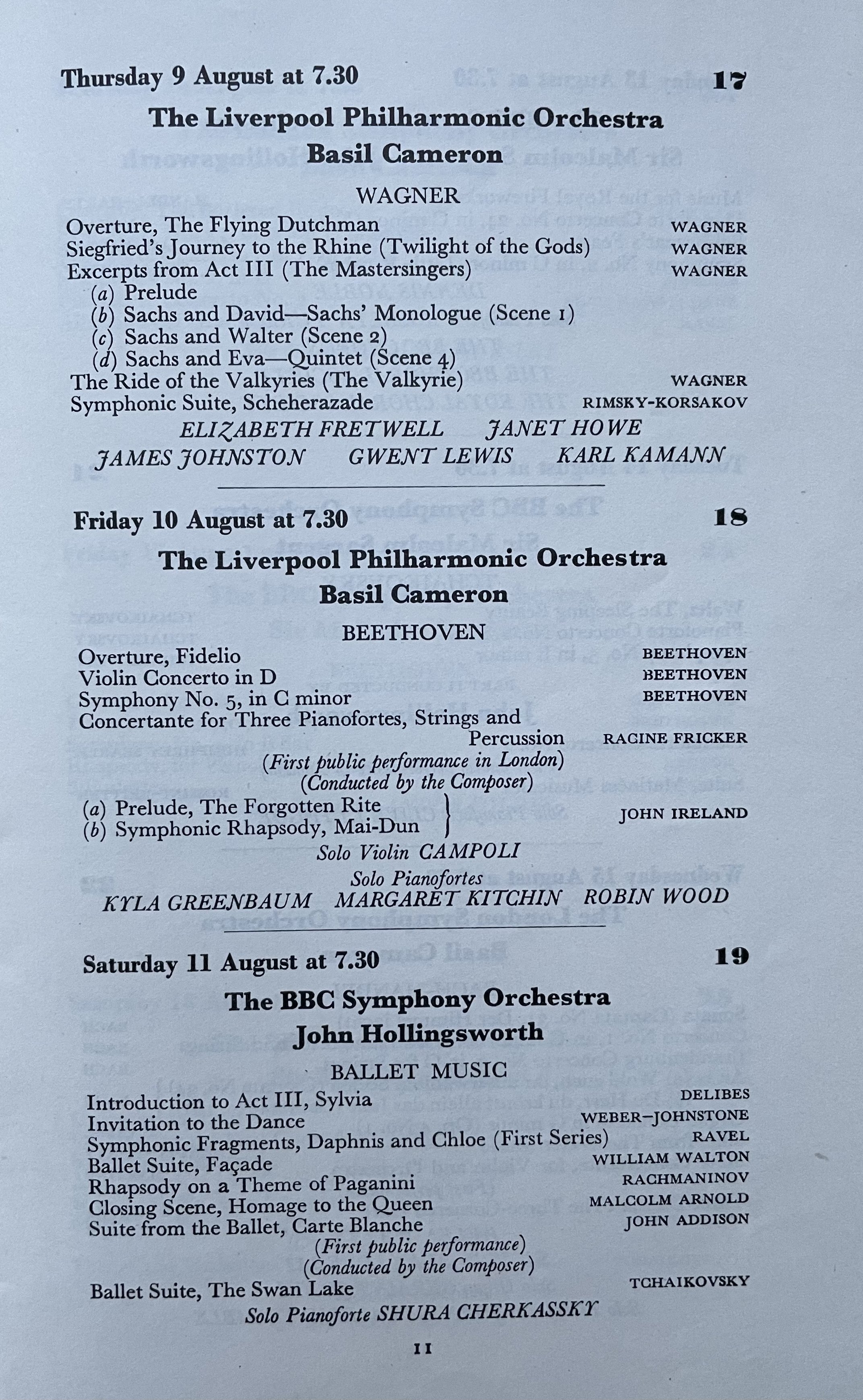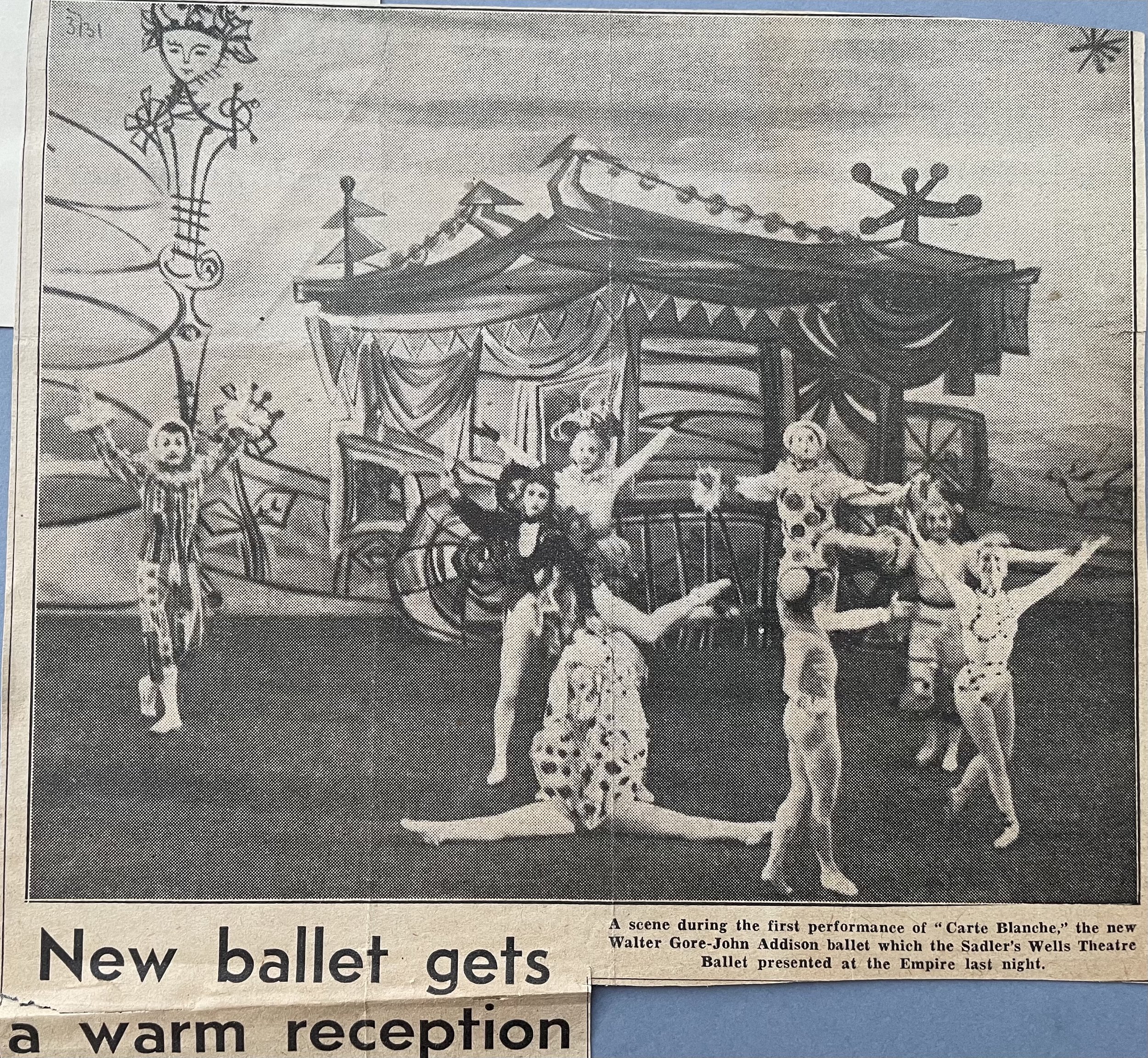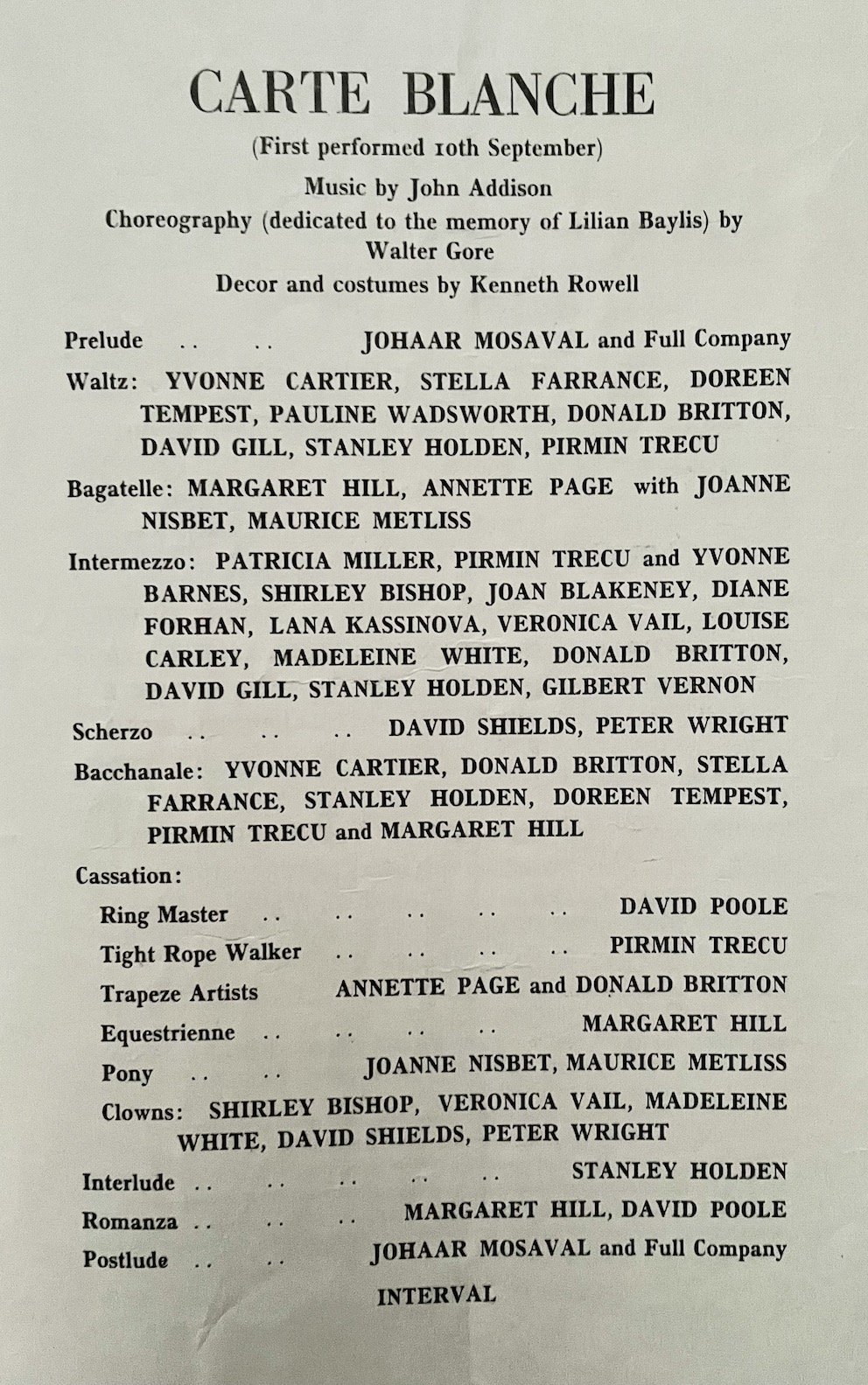Ballet Suite Carte Blanche
Carte Blanche was commissioned by the Sadler’s Wells Theatre Ballet and was first performed at the 1953 Edinburgh Festival. It is a “divertissement” of a highly entertaining nature with no connected story. The choreography was by Walter Gore. Due to the success of the ballet, the composer arranged a Suite of five movements for the concert hall and this work was first publicly performed, with the composer conducting the BBC Orchestra, at the 1956 London Proms Concerts after which it was performed regularly under many well-know conductors, including Leopold Stokowsky and Sir Thomas Beecham who recorded it with the Pro Arte Orchestra.
Press Notices
“John Addison’s concert suite from “Carte Blanche” Ballet was given, at Saturday night’s Prom, its first public performance. It has wit, colour, style, and should sustain itself as a platform piece. The “Carte Blanche” score is trim and clear, and the points are sparklingly made. Addison conducted, and showed a sure touch in presenting his music too.” - Daily Mail, London, August 13, 1956
“The sophisticated high spirits of John Addison’s cleverly scored ballet Suite, “Carte Blanche”, made an immediate appeal to these young players, and they also attacked tremendous gusto. Butterworth’s pastel-coloured “The Banks of Green Willow” found them almost, but not quite, as successful with finer nuances of expression.” - Prize Day at R.C.M. - Music by Some Former Students
“Carte Blanche” proved delightful music, unpretentiously melodious and, apart from some thickness in the bacchanale, scored with a sure touch and considerable ingenuity and wit. The score has been published by the Oxford university Press and will, I doubt not, be much in demand as a light-weight addition to a popular programme.” Extract from Listener, London, August 16, 1956
“John Addison is one of the outstanding film music composers of the younger generation whose “serious” output is small and certainly not widely known. This suite is taken from a ballet commissioned by Sadler’s Wells Theatre Ballet in 1953. Obviously possessing the technical resources of a serious composer, his predilection so far appears to be for “light-weight” texture and content. He is certainly the only composer I know whose obvious influence by Britten, occasionally to the extent of direct borrowing of a textural idea, appears to be both healthy and beneficial. Curiously enough, the process seems also to have worked the other way, for some of the extrovert moments in Britten’s masterly “Prince of the Pagodas” are texturally nearer “Carte Blanche” than anything else I can think of - and what higher compliment could I invent?
The extensive practical experience of working in films has enabled Mr. Addison to develop into a better and more fully equipped composer technically than most of his more solemn contemporaries. I find the quality of his music high enough to foster the hope that he will not play the penalty, albeit a financially pleasant one, of having his best ideas swallowed into the moratorium of the sound track, no less dead than if they end, as the best musical ideas often do, on cutting room floor.” - Record News, London, June 1958
“Addison’s gay, not to say frivolous, ballet suite came as a relief. Its point, humour, economical scoring and glamorous tune delighted the audience, who, it was clear, would gladly have heard it all over again. Sir Thomas, it need scarcely be said, extracted from it every ounce of fun; and one hopes he was pleased with the reception given to this, the first work he has chosen for performance from the list submitted to him, at his request, by the Composer’s Guild. “ - The Musical Times, London, January 1960















